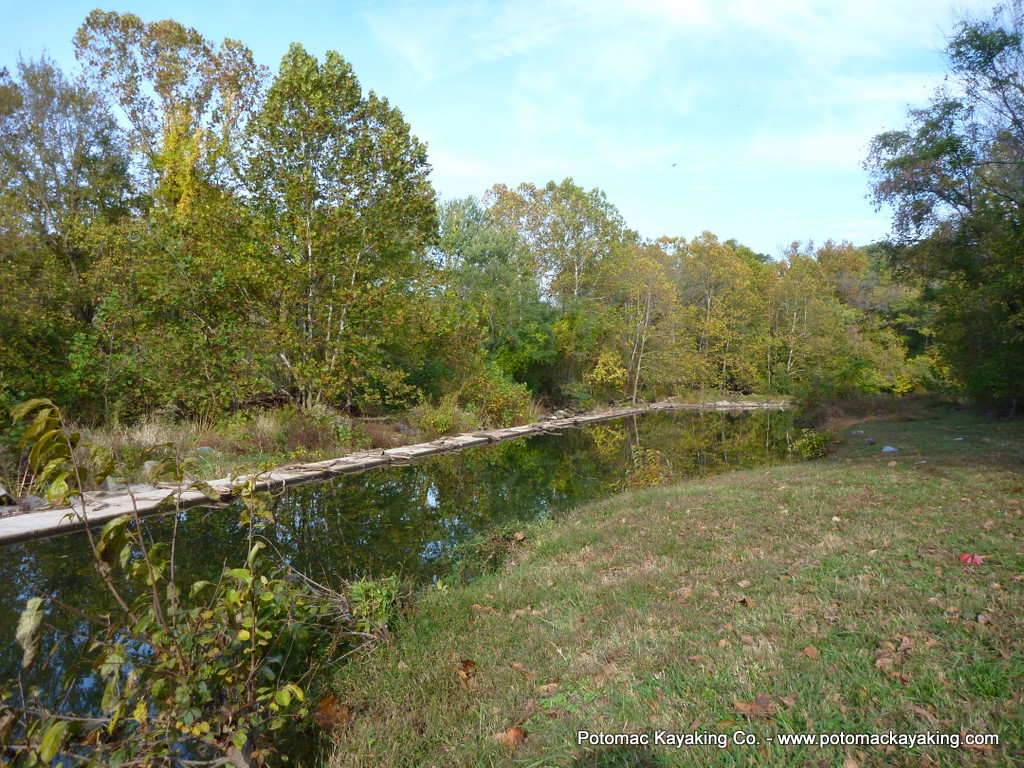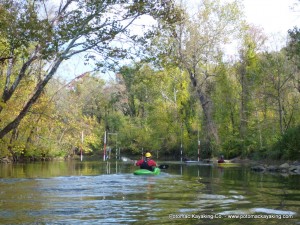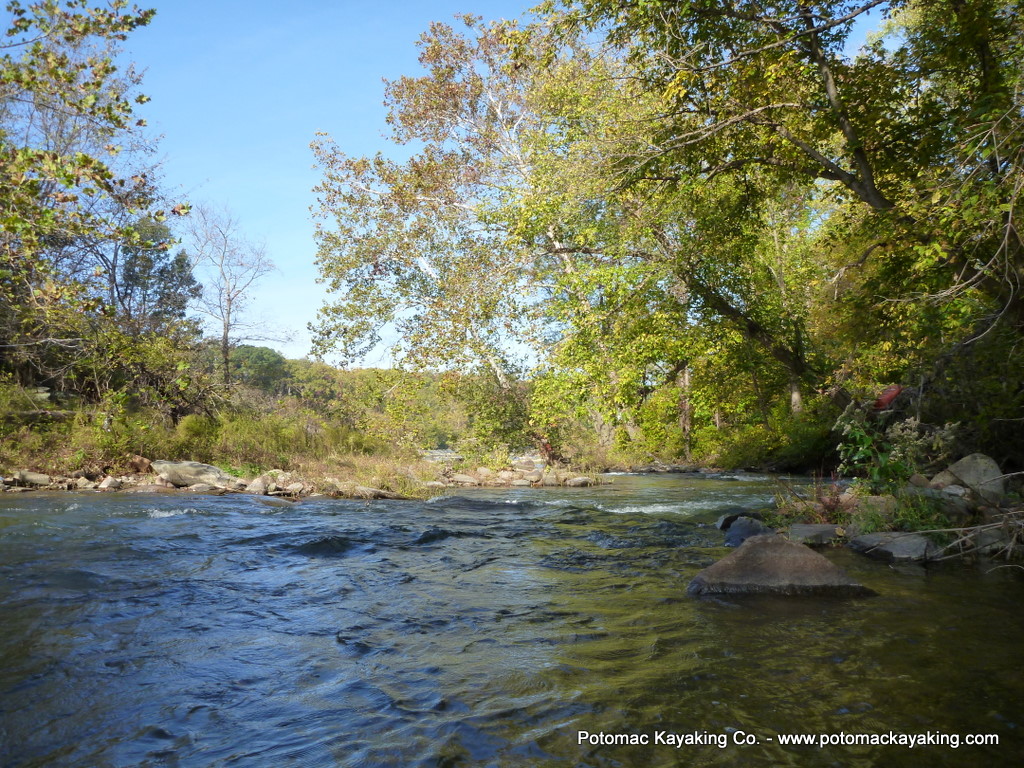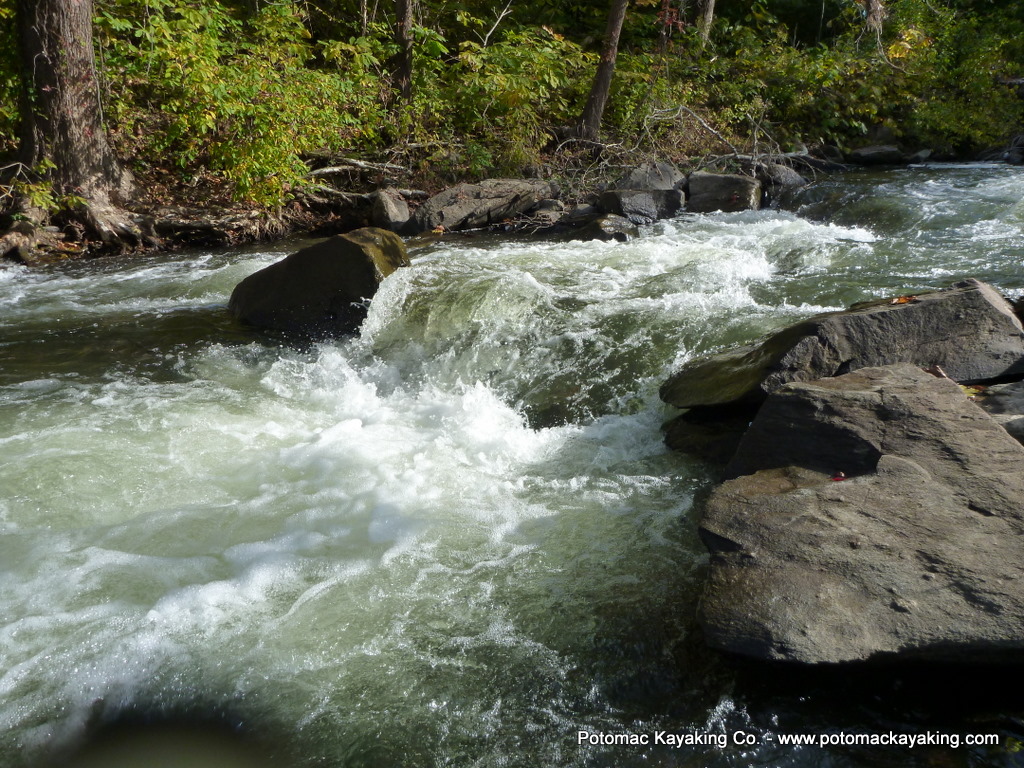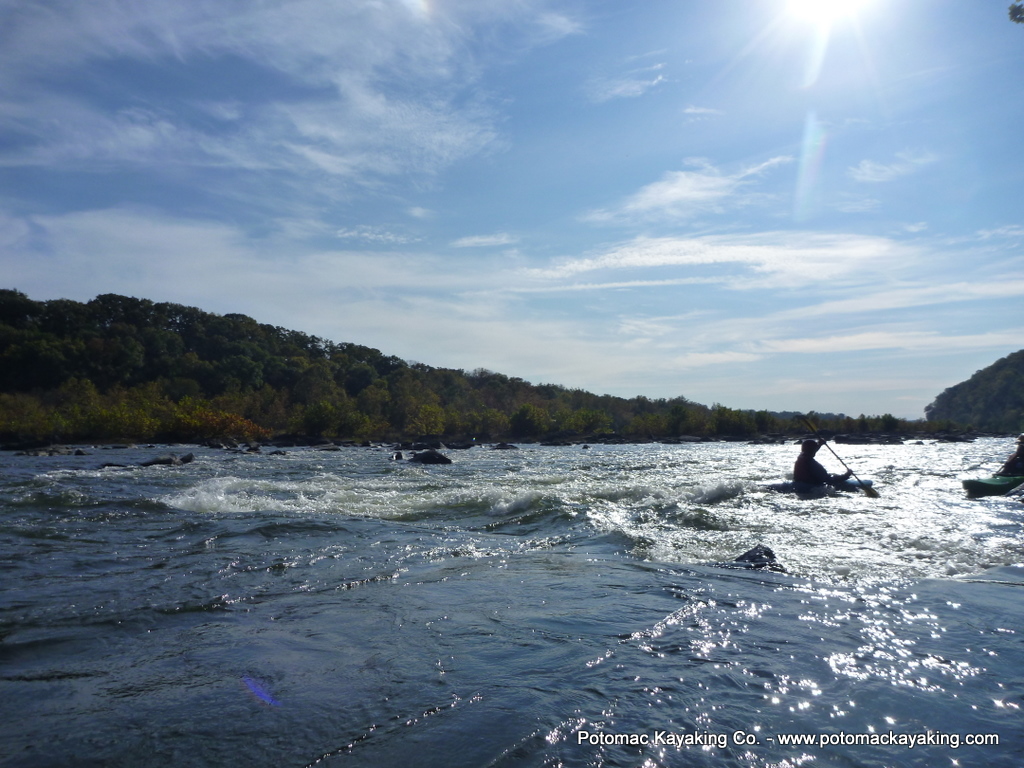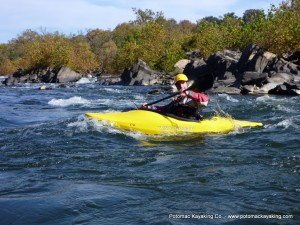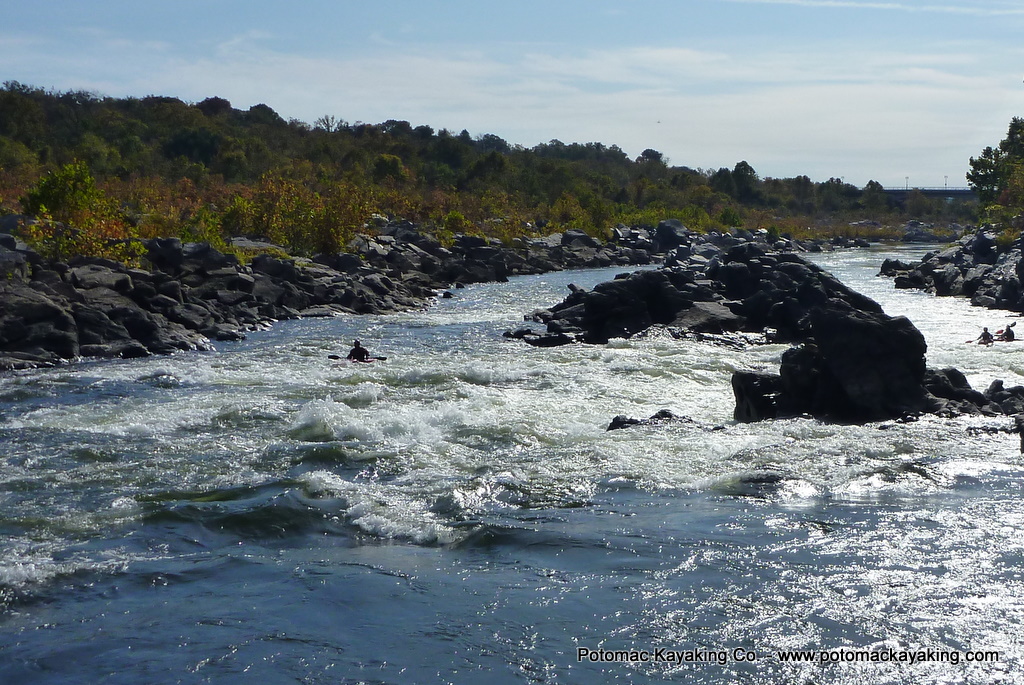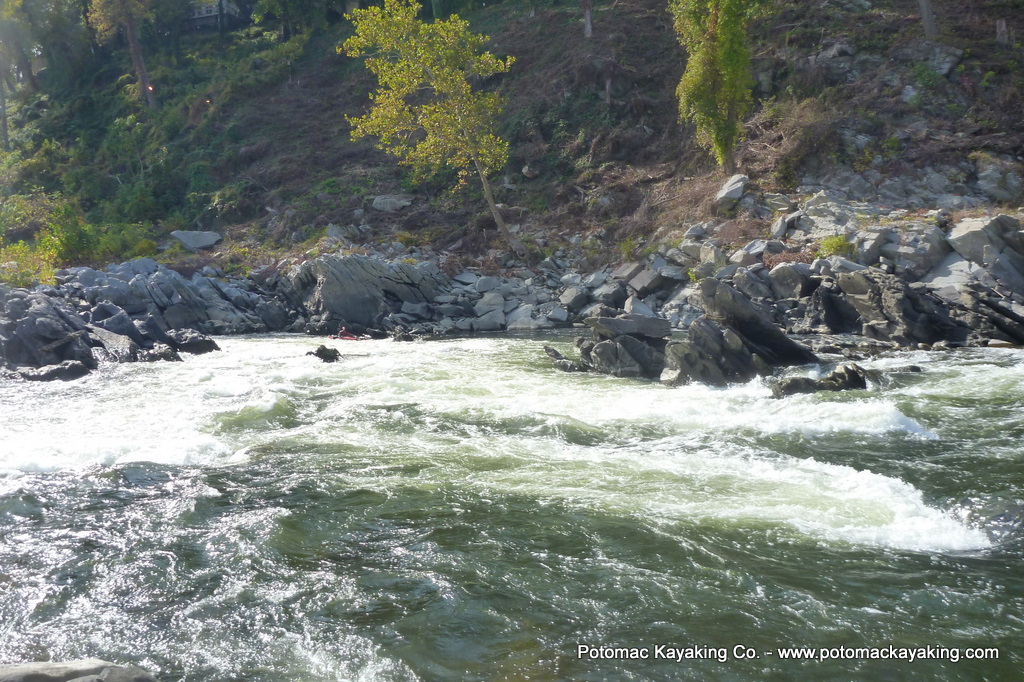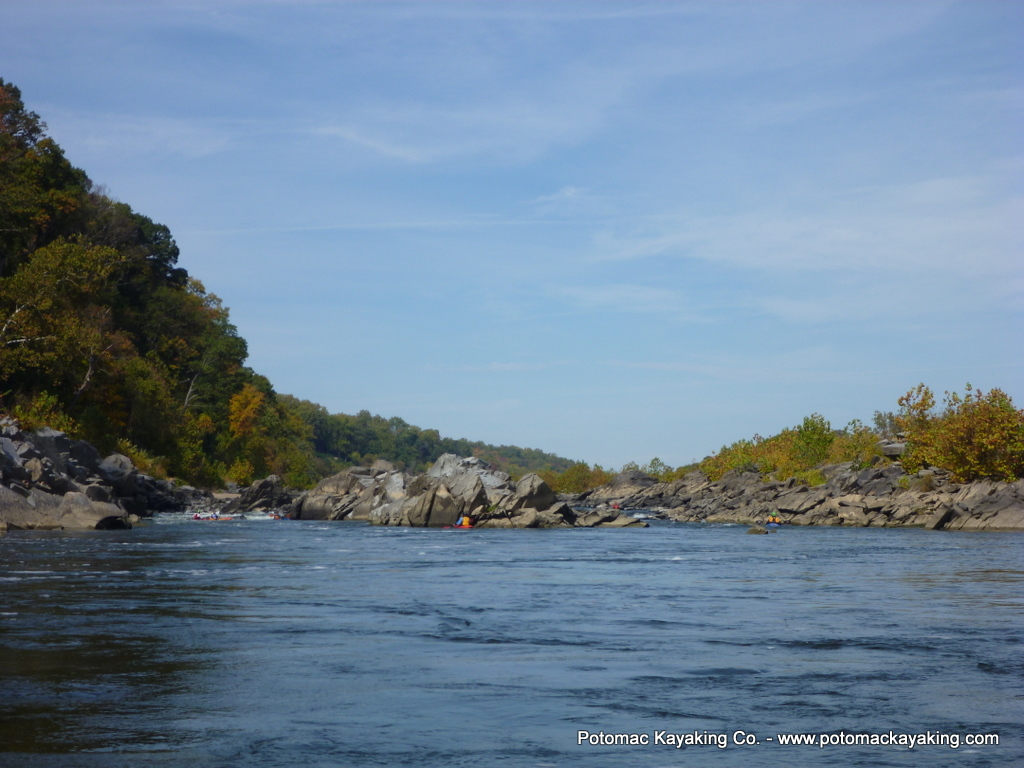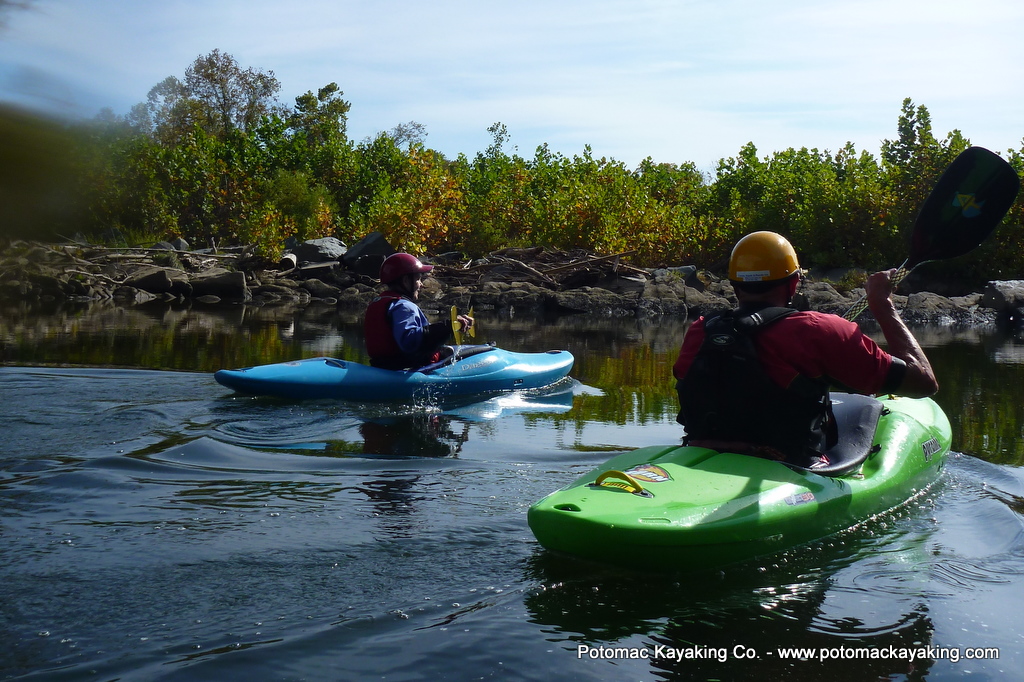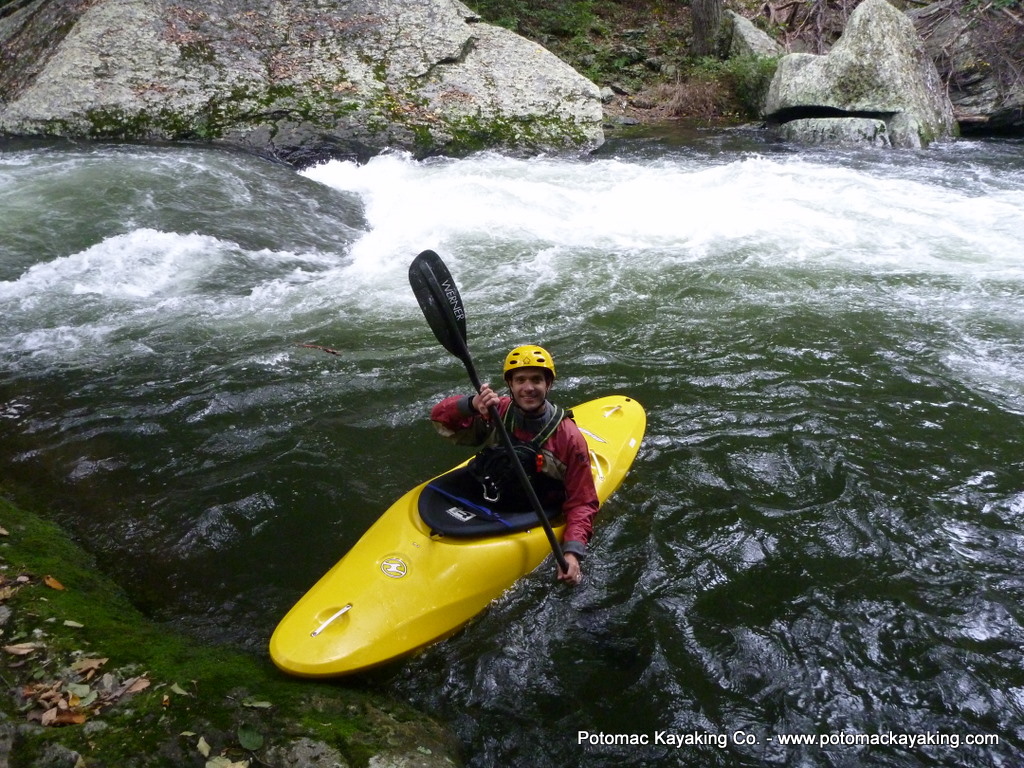October 24, 2010. Fall has arrived, and with it change along the Potomac River. The leaves are changing; the river colder and clearer. The region hasn’t seen sustained rain in months, so with the water low, it’s a perfect time to run Little Falls!
.
Overview
The Potomac River journies southeast toward the Chesapeake Bay along the Maryland-Virginia border. At Little Falls, the Potomac leaves Maryland and enters Washington, D.C. Below Little Falls, the Potomac is tidal.
When locals say they’re “going to run Little Falls,” they’re usually referring to stretch of the Potomac that begins adjacent to C & O Canal Lock 6 and runs south for a little more than a mile.
The run is short but scenic, and has some nice wave trains and surfing waves. Little Falls is the final rapid in this run and is considered a class III/IV, depending on the conditions and the line you take.
Logistics
At 9:30 am, we set the take-out shuttle at Fletcher’s, then drove north about two miles to Lock 6, the usual put-in. With no parking at Lock 6, we parked at Lock 5.
Gauge
The Little Falls gauge read 2.8 feet with 1850 cfs. High tide was scheduled for 10:07 am.
The Run
Because we started the day at Lock 5, we used the feeder canal to make our way back towards Lock 6. The feeder Canal runs between the C & O Canal and the River.
After paddling for about 15 minutes, we came upon the whitewater slalom training gates.
Veering left (west) toward the river, the Little Falls run is about to begin.
…
The first rapid is Z channel, a class II+ that starts out pretty unassuming and ends with a little punch. Below is a picture of the entrance. Because the channel is narrow and can pick up strainers, many scout this run from river left.
Predictably, Z channel starts from river left to river right, then back to river left.
.
Coming through the last turn, the water splits into two around a big rock, pictured below. The right side of the rock (pictured left) is usually easier. We ran straight through the left side and through the hole (pictured right).
.
After going through Z channel, we reached the River, which was wide open. We ferried across the river to the Virginia side to start the main run.
The next 3/4 mile was all about wave trains!
.
In addition to being gorgeous, this part of the river offered some nice surfing!
.
.
Before we knew it, we were approaching Little Falls and pulled up to the big eddie on river right, the Virginia side.
.
(Note, the run can be scouted from the Maryland side too. If you don’t like what you see, you can always portage!) A short climb up the rocks, and voila: Little Falls!
.
Options, options. There are many, but I’ll just talk about the two we did today. The Maryland side (river left) is usually considered a class III. The person pictured above on the left side is running it.
.
The Virgina side is more technical and usually considered a class III/IV. The person pictured above is running it, diagonally from river left to river right. One of the most challenging parts of the Virginia side is not seen in the picture above as there’s a boulder blocking the view. However, you can see what lies ahead from a nice eddie found on river left towards the beginning of the run.
.
Above is the view from the eddie on river left. The small rock in the center of the whitewater is cleaver rock, which is to be avoided. To the left of cleaver rock is a pretty mean hole (highly affected by the tide). I ran the line to the right of cleaver rock. This was easier said than done, of course, as the river is fast moving and pushing in the other direction.
We ran both of the lines above and made it through in one piece. What a rush!
Here’s a view of Little Falls looking back, Virginia on left and Maryland on the right.
.
After that, it was smooth sailing back to the take-out, where we arrived just in time for lunch.
.
SYOTR!
*Note, trip reports are for informational purposes only, and the information contained therein should not be construed as recommendations or facts. Paddlers must take responsibility for their own safety and plan accordingly.*
Copyright 2010 Potomac Kayaking Company
.
.


